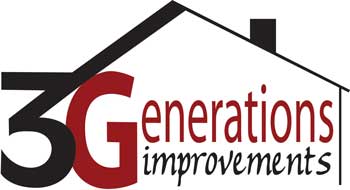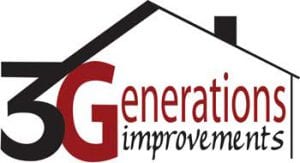Please take a look at the below article posted by Progressive Foam. We have had several homeowners lately with one of the below problems causing allergy or headache symptoms. We have found that most of the time the problems are due to poor ventilation and excessive moisture holding in the wall cavity which causes mold spore growth. We can often times solve these problems by removing siding or windows and adding exterior products that allow for more breath-ability, such as Tyvek House Wrap (see note below):

The breathable structure of this house wrap allows moisture vapor to pass through to help promote drying in wall systems which can aid in preventing the growth of mold and mildew.
_________________________________________________________
When you’re at home, do you notice that you get headaches, have dry and itchy skin or nose and throat irritations? Or do you notice that you are sensitive to odors, feel nauseous or fatigued? Maybe you feel these symptoms when you’re in a particular room or even the whole house. If you do, these could be just a few signs that your home is has “sick building syndrome” or SBS, creating an unhealthy and even dangerous environment for you and your family.
According to the Environmental Protection Agency (EPA), the term SBS is “used to describe situations in which building occupants experience acute health and comfort effects that appear to be linked to time spent in a building, but no specific illness or cause can be identified.”
The problem may be more prevalent than you think. A report from the World Health Organization stated that up to 30% of new and remodeled buildings worldwide could be linked to symptoms of sick building syndrome.
There are a number of potential causes of SBS, including:
1.) Inadequate ventilation
This is considered to be one of the biggest factors attributed to SBS. Inadequate ventilation can even occur if the systems in your home are not working properly, including heating and air conditioning systems. In addition, if you make improvements to your home such as adding certain types of insulation, you may be stifling the appropriate ventilation needed without even realizing it. Make sure you choose insulation products that won’t cause a problem in your home.
2.) Chemical Contaminants
Contaminants from both indoor and outdoor sources can include, but are not limited to, lead paint, pesticides, tobacco smoke, asbestos, water pollution and household chemical.s
3.) Biological contaminants
You may not realize that the average family of four generates 4-6 gallons of water vapor inside the home every daythrough activities such as cooking, showering, ironing and cleaning (think about how much steam comes from a hot shower). If this vapor doesn’t have a way to efficiently escape your home (such as through adequate ventilation), it can become trapped in the walls of your home and create some serious problems. Bacterias, mold, etc. can breed in stagnant water that accumulates in places like ducts, ceiling tiles, carpet and insulation.
4.) Pest infestations
Bird droppings and nesting insects can be an additional source of biological contaminants, not to mention the additional dangers that pests such as termites can pose. Take steps to protect your home from pests and other critters.

